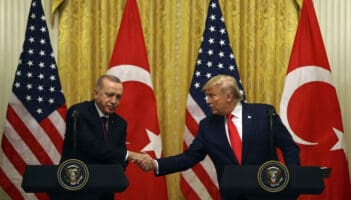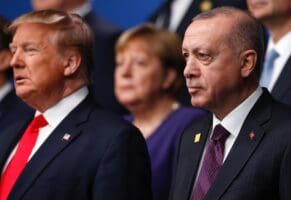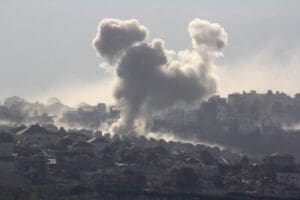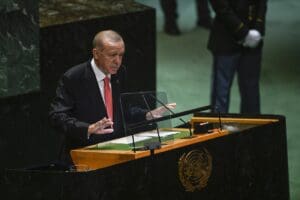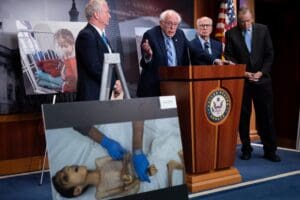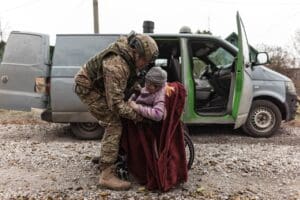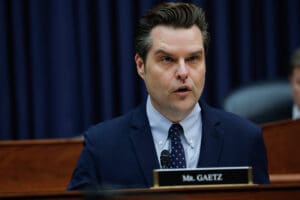US Alliance with Syrian PYD Alienates Turkey
The most recent spat between the United States and Turkey over American support for the Democratic Union Party (PYD) in Syria is yet another example of increasing tensions between two NATO allies over their respective Syria policies.
The images showing US soldiers wearing the People’s Protection Units (YPG) insignia– the military wing of the PYD – drew sharp criticism in Turkey to which the US State Department and the Pentagon responded with conflicting views in an attempt to calm Turkey’s reaction.
A dangerous gamble
This most recent episode is an indication of an increasingly dangerous trend whereby the US’ exclusive focus on fighting the Islamic State of Iraq and the Levant (ISIL, also known as ISIS) is leading to tactical alliances with sub-state actors on the ground that threaten larger strategic relationships with traditional US allies.
The US government has already acknowledged at the highest levels that the PYD in Syria is aligned with the PKK, which has been waging a war against the Turkish government for more than three decades.
This was a remarkable admission given that until very recently, the administration and the US State Department had maintained that the PYD was a separate organisation from the PKK – an armed group that is recognised by both the US and Turkey as a terrorist organisation.
This could be interpreted as a dilemma forced upon the administration by the realities on the ground, but it points to the fact that the US strategy to destroy ISIL is missing some significant elements – such as getting full support and coordination of a critical ally such as Turkey.
The Obama administration started to support the PYD forces in autumn 2014 when ISIL surrounded the small town of Kobane adjacent to the Turkish border.
President Barack Obama explained to then Prime Minister Recep Tayyip Erdogan that the air drops were simply to resupply the Kurdish forces fighting against ISIL – with the aim of preventing the fall of Kobane and dealing a serious blow to its propaganda machine.
The Pentagon seemed to have found it an effective way to bleed ISIL, which was focused on taking over Kobane to add to its aura of invincibility at the time.
This line of reasoning helped the PYD’s own public relations agenda and strategy to convince the West that it could function as an effective tool against ISIL.
Misrepresentation of Turkey
The Turkish government understood PYD’s political agenda and openly opposed the US help to the group. While opposed to the calls to arm the group directly, Turkey nevertheless facilitated the passage of military help from the Iraqi Kurdish Peshmerga and Free Syrian Army (FSA) forces through the Turkish territory to come to the aid of Kobane.
Despite this, Turkey was being presented in the Western media as “not doing enough” to save Kobane from ISIL. Some Kurdish leaders even claimed that Turkey was helping ISIL – an accusation that continues to be repeated without hard evidence.
All this was happening while Turkey admitted around 200,000 mostly Kurdish refugees from Kobane in a matter of days and treated hundreds of wounded fighters. Yet Turkey was often presented in the media as demonstrating an anti-Kurdish attitude and letting Kobane fall to ISIL.
Turkey’s concern is the political ambitions of the PYD and the regional game that the PKK is trying to play. This concern has only grown over the past year and a half, and created a serious source of tension in the US-Turkey relationship.
Some PKK leaders have left the Qandil Mountains – in northern Iraq where the PKK camps are headquartered – and joined the PYD in northern Syria starting with the Kobane fight, which served as a Kurdish nationalist moment and helped the organisation’s efforts to recruit inside Turkey.
The power vacuum in northern Syria that emerged in the wake of the civil war was an opportunity for the PKK to add new recruits to its cadres and to legitimise itself internationally.
The PKK’s regional ambitions and its hope to receive Western support contributed to the failure of the “peace process” between Turkey and the armed group in July 2015. The ungoverned spaces in Syria as a result of the civil war and the Western support against ISIL unsweetened a potential peace deal with Turkey.
Hindered constructive dialogue
Today, few dispute that the PYD and its armed wing YPG are the Syrian extension of the PKK. Turkey has been vehemently disputing the wisdom of using a designated organisation against another one.
The US help to the PYD exacerbates suspicions and stokes fear among the Turkish public that a PKK statelet is being created in Syria under American tutelage.
As the Turkish leadership has been unable to convince the Obama administration on pulling its support for the PYD, Turkey is pursuing a two-fold strategy: It is employing a military campaign against the PKK inside Turkey, and through drawing a red line along the Euphrates River, it aims to prevent the PYD from connecting its cantons inside Syria.
As the US uses the PYD against ISIL, the NATO allies are at odds over the PYD and risk working at cross purposes.
The Obama administration laments the ineffectiveness and fragmentation of Arab forces as well as the absence of effective partners on the ground.
There is obviously some truth in this, but the strategy to defeat ISIL cannot be at the same time alienating crucial regional allies such as Turkey.
The US should also be mindful of the political ambitions of its local partners, especially given that ISIL will not disappear only through a military campaign.
Turkey certainly understands it cannot prevent the US from supporting whomever it wants to, but this is hindering a constructive dialogue between the allies and it is a recipe for further alienation.
For the anti-ISIL strategy to succeed, having a sustained and serious strategic dialogue with Turkey would go a long way.
Failure to have this kind of strategic conversation would not only damage the US-Turkey relations, but it would also further complicate the fight against ISIL.
This article was first published in Al Jazeera on June 2, 2016.




